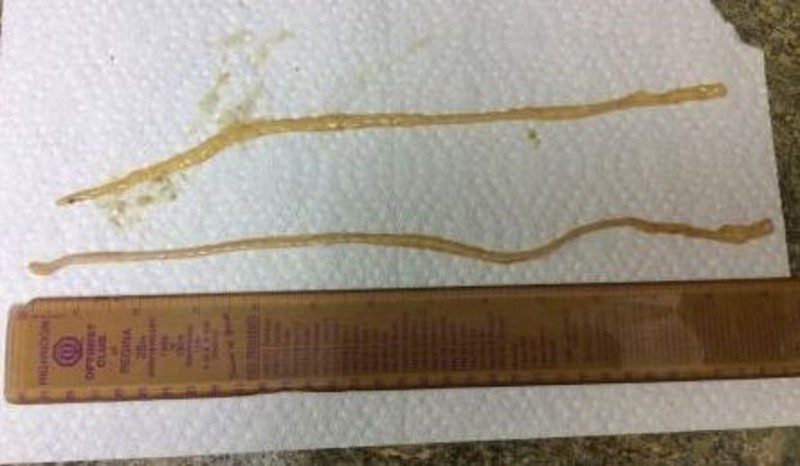Eww! This creepy fellow is a tapeworm discovered in the stool of a one year old rescue dog.
Like the picture demonstrates, tapeworms are thin, flat and white and can resemble a ribbon or tape. Tapeworms attach to the small intestines of dogs and cats. How your pet acquires tapeworms will depend on the type of tapeworm. For example, Dipylidium caninum is a common tapeworm pets can acquire from ingesting fleas during grooming. Whereas the Taenia species, use smaller prey animals as their hosts and our pets can contract these parasites when hunting mice or other small rodents. Pets that hunt or have a habit of eating stool are more at risk of acquiring tapeworms as well as other intestinal parasites so regular deworming is advised.
Diagnosing tapeworms is usually made by finding the white tapeworm segments in the feces or attached to the fur around the pet’s backend. They often look like grains of rice.
Tapeworms do not normally cause serious health problems in dogs and cats but can be a more concerning in younger puppies and kitties.
Your veterinarian will prescribe a deworming treatment containing praziquantal to kill the tapeworms. Flea control is also critical in the management and prevention of tapeworm infection.
The risks of humans developing tapeworm infections directly from their pet is low. However, if you are concerned you or a family member may have a tapeworm infection, please consult your physician.
The tapeworm in the photo measures out to around 14 inches!!





